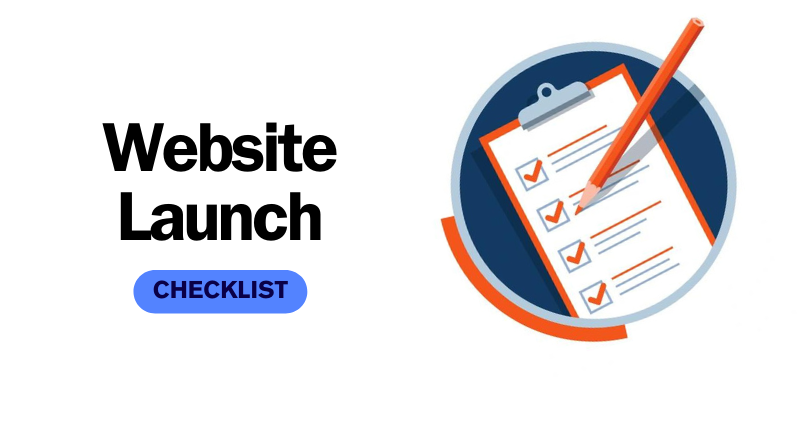The #1 Step to Take Before Launching a Website
Introduction Launching a website is an exciting moment for any business or individual. Whether you’re starting an online store, a personal blog, or a company website, careful planning is necessary to ensure success. There are many things to check before making your website live, but the most crucial step in your Website Launch Checklist is Website Testing and Optimization. Why Website Testing and Optimization is Essential Before you launch your website, you must ensure that everything is working perfectly. A poorly tested website can lead to broken links, slow loading speeds, security vulnerabilities, and a poor user experience. This can drive visitors away and hurt your online reputation. That’s why Website Testing and Optimization should be the first priority in your Website Launch Checklist. Steps to Test and Optimize Your Website 1. Check Website Speed and Performance A slow-loading website can frustrate visitors and cause them to leave before exploring your content. Google also considers page speed as a ranking factor, so improving your website’s loading time can help with SEO. Use tools like Google PageSpeed Insights, GTmetrix, and Pingdom to analyze your website speed. Optimize images by compressing them without losing quality. Minimize CSS, JavaScript, and HTML files. Enable caching to improve load times for returning visitors. 2. Mobile-Friendliness and Responsive Design Most users browse the web on mobile devices. Your website must be fully responsive to provide a smooth experience on all screen sizes. A mobile-friendly design should always be a key part of your Website Launch Checklist. Test your website on different devices and screen resolutions. Use Google’s Mobile-Friendly Test to check responsiveness. Ensure touch elements are large enough to be easily clicked on smaller screens. 3. Fix Broken Links and Navigation Issues A website with broken links or poor navigation can frustrate users and make them leave your site. Checking and fixing these issues should always be on your Website Launch Checklist. Use tools like Broken Link Checker to find and fix broken links. Ensure the menu structure is easy to navigate. Test all internal and external links to make sure they work properly. 4. SEO Optimization Optimizing your website for search engines is crucial for visibility. This should be a key part of your Website Launch Checklist. Add proper meta titles and descriptions with relevant keywords. Use SEO-friendly URLs that clearly describe the content. Check for duplicate content and remove unnecessary pages. Implement structured data (Schema Markup) for better search engine indexing. 5. Security Measures A secure website is essential to protect user data and prevent hacking attempts. Security checks should be included in your Website Launch Checklist. Install an SSL certificate to encrypt user information. Use strong passwords and enable two-factor authentication. Regularly update your CMS, themes, and plugins. Set up automatic backups to restore your site if needed. 6. Test Forms and Contact Pages If you have forms, contact pages, or email sign-ups, test them to ensure they are functioning properly. Fill out and submit each form to check if they are working correctly. Verify that confirmation emails are sent. Check that form submissions reach the correct email inbox or CRM. 7. Ensure Cross-Browser Compatibility Users may access your website from different web browsers, so it’s important to test compatibility. Your Website Launch Checklist should include browser testing. Check your website on Chrome, Firefox, Safari, Edge, and other popular browsers. Ensure that all design elements appear correctly in every browser. 8. Set Up Analytics and Tracking Tracking user activity helps you measure performance and make improvements. Include this in your Website Launch Checklist. Install Google Analytics to monitor traffic and user behavior. Set up Google Search Console to track search performance. Use heatmaps to analyze how visitors interact with your website. 9. Backup Your Website Before launching, always create a complete backup of your website. This will help you restore your site in case anything goes wrong after the launch. A backup strategy should always be part of your Website Launch Checklist. Use backup tools like UpdraftPlus (for WordPress) or cPanel backups. Store backups in a secure location, such as cloud storage or an external hard drive. Final Thoughts A successful website launch requires careful preparation and thorough testing. Before making your website live, Website Testing and Optimization should be the first priority in your Website Launch Checklist. By following the steps mentioned above, you can ensure a smooth, secure, and optimized website that provides the best experience for visitors. Don’t rush the process—take your time to check every detail before the big launch!


